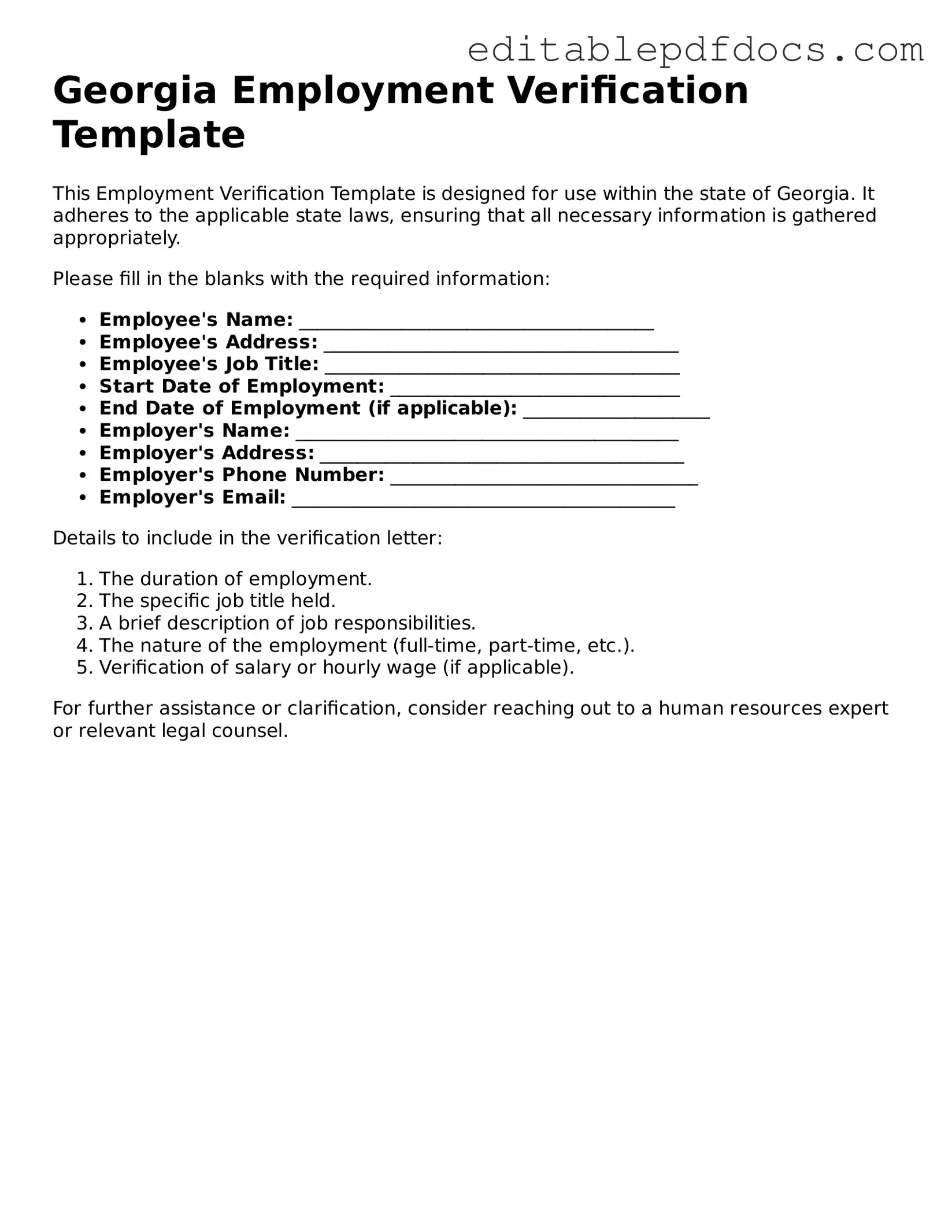Filling out the Georgia Employment Verification form can seem straightforward, but many individuals make common mistakes that can lead to delays or complications. One frequent error is providing inaccurate personal information. This includes misspellings of names or incorrect Social Security numbers. Such inaccuracies can create confusion and may result in the form being rejected.
Another mistake often encountered is failing to include all required documentation. The Employment Verification form may require additional paperwork, such as pay stubs or tax forms. Omitting these documents can hinder the verification process and may delay employment opportunities.
People sometimes overlook the importance of clear and legible handwriting. If the form is handwritten, unclear writing can lead to misunderstandings. It is essential to ensure that all information is easily readable to avoid any potential issues.
In some cases, individuals do not sign or date the form properly. A missing signature or date can render the form invalid. It is crucial to double-check that all necessary fields are completed before submission.
Another common error is not providing accurate employment dates. Whether it's the start date or the end date, inaccuracies can lead to questions about employment history. It's vital to verify these dates against official records to ensure accuracy.
Many people also fail to check the form for completeness. Skipping sections or leaving them blank can raise red flags during the verification process. Taking the time to review the form thoroughly can prevent unnecessary complications.
Additionally, misunderstanding the purpose of the form can lead to mistakes. Some individuals may provide irrelevant information that does not pertain to their employment history. Staying focused on the specific requirements of the form is essential for clarity.
Another frequent oversight is not following the instructions carefully. Each section of the form may have specific guidelines that need to be adhered to. Failing to follow these instructions can result in the form being returned for corrections.
Lastly, procrastination can be a significant barrier. Waiting until the last minute to complete the Employment Verification form can lead to rushed submissions and mistakes. It is always best to allocate ample time to fill out the form accurately and thoughtfully.
